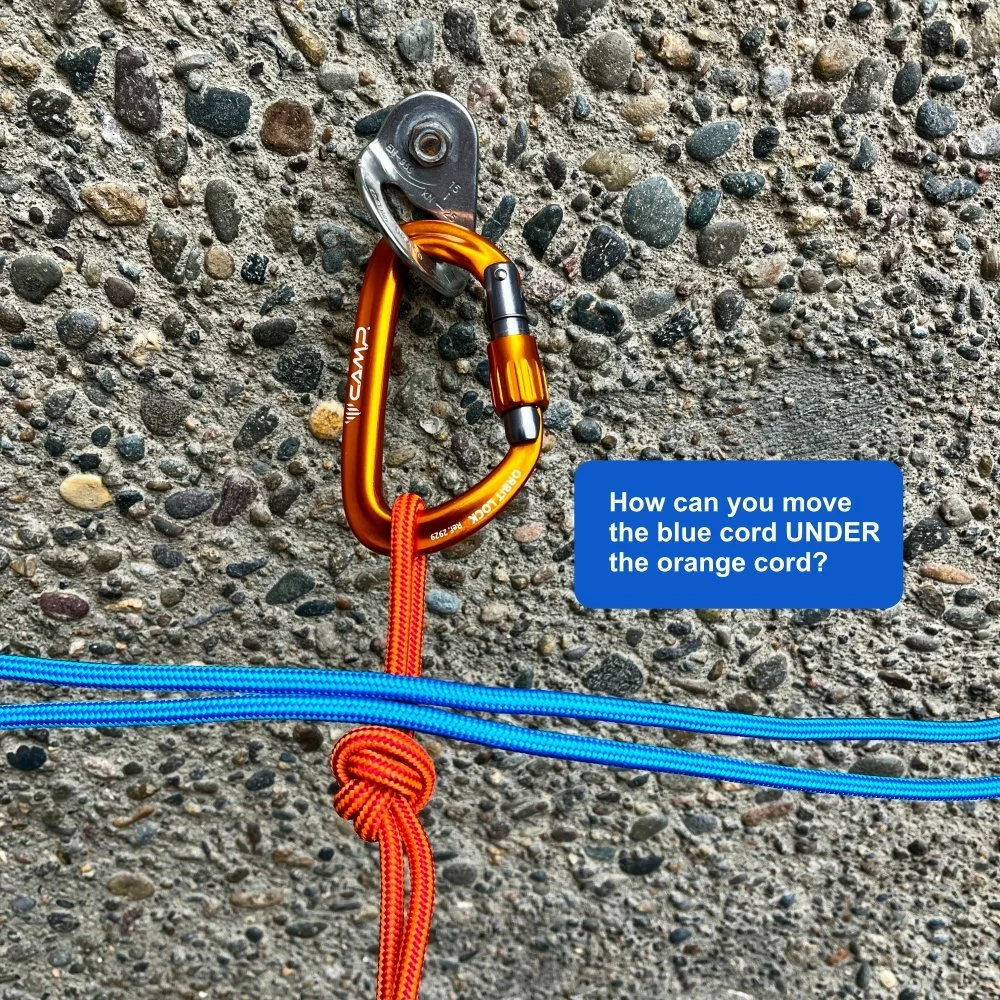De-cluster your anchor with the ”revolving door”
Premium members can read the complete article here:
At a busy anchor (maybe with several people, or a big wall) it's very common to have one rope/cord/sling under another one.
For whatever reason, sometimes those ropes need to “trade places”, as in, the top rope needs to be on the bottom, or vice versa. How can you (easily) do this?
You might be tempted to try the “anchor limbo” by physically shimmying underneath the rope, or maybe even untying completely to move the rope above or below the other one. I’ve done both, and they both suck.
But there’s a much simpler (and elegant) method: the “revolving door”.
It's deceptively simple, and to my eye, looked like a bit of a magic trick the first few times I did it. Once you learn it, you might laugh at how easy it is!
To do this, you need two things: 1) the rope that you need to move above or below needs to be clipped to a carabiner, and 2) the rope needs to NOT have a giant load on it.
Brief description: say you have a rope on the top, and it needs to be on the bottom/under of what we’ll call the “fixed” rope.
Go to the carabiner that's clipped to the fixed rope. The gate on this carabiner needs to be facing up.
Open the carabiner.
Clip the “top” rope into the carabiner.
Here's the key move: Spin (aka “revolve”) the carabiner 180°.
Now, the gate on the carabiner should be facing down. Open the carabiner, and unclip the bottom rope.
Schweeeet! The “top” rope is now UNDER the fixed rope! Give yourself a high five for being so clever. =^)
You probably will want to revolve the carabiner back again to its original position, with the gate up. If it was a locker, relock it.
Like I said, kind of magical! Definitely a #CraftyRopeTrick!



